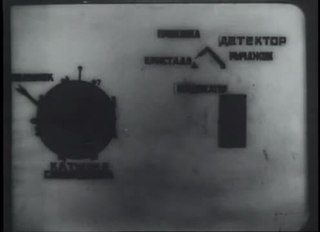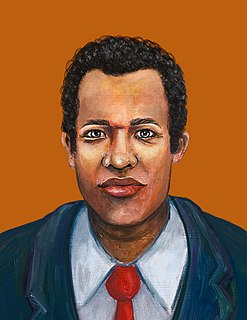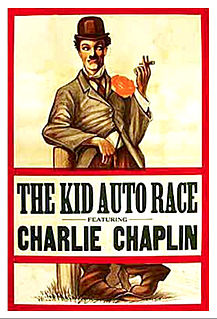
A documentary film or documentary is a non-fictional motion-picture intended to "document reality, primarily for the purposes of instruction, education or maintaining a historical record". Bill Nichols has characterized the documentary in terms of "a filmmaking practice, a cinematic tradition, and mode of audience reception [that remains] a practice without clear boundaries".

Dziga Vertov was a Soviet pioneer documentary film and newsreel director, as well as a cinema theorist. His filming practices and theories influenced the cinéma vérité style of documentary movie-making and the Dziga Vertov Group, a radical film-making cooperative which was active from 1968 to 1972. He was a member of the Kinoks collective, with Elizaveta Svilova and Mikhail Kaufman.

On October 2, 1968 in the Tlatelolco section of Mexico City, the Mexican Armed Forces opened fire on a group of unarmed civilians in the Plaza de las Tres Culturas who were protesting the upcoming 1968 Summer Olympics. The Mexican government and media claimed that the Armed Forces had been provoked by protesters shooting at them, but government documents made public since 2000 suggest that snipers had been employed by the government.

Man with a Movie Camera is an experimental 1929 Soviet silent documentary film, directed by Dziga Vertov, filmed by his brother Mikhail Kaufman, and edited by his wife Yelizaveta Svilova. Kaufman also appears as the eponymous Man of the film.

Kino-Pravda was a series of 23 newsreels by Dziga Vertov, Elizaveta Svilova, and Mikhail Kaufman launched in June 1922. Vertov referred to the twenty-three issues of Kino-Pravda as the first work by him where his future cinematic methods can be observed.
Cinéma vérité is a style of documentary filmmaking developed by Edgar Morin and Jean Rouch, inspired by Dziga Vertov's theory about Kino-Pravda. It combines improvisation with use of the camera to unveil truth or highlight subjects hidden behind reality. It is sometimes called observational cinema, if understood as pure direct cinema: mainly without a narrator's voice-over. There are subtle, yet important, differences between terms expressing similar concepts. Direct Cinema is largely concerned with the recording of events in which the subject and audience become unaware of the camera's presence: operating within what Bill Nichols, an American historian and theoretician of documentary film, calls the "observational mode", a fly on the wall. Many therefore see a paradox in drawing attention away from the presence of the camera and simultaneously interfering in the reality it registers when attempting to discover a cinematic truth.

Up Against the Wall Motherfucker, often shortened as The Motherfuckers or UAW/MF, was a Dadaist and Situationist anarchist affinity group based in New York City. This "street gang with analysis" was famous for its Lower East Side direct action.

William Greaves was a documentary filmmaker and a pioneer of film-making. He produced more than two hundred documentary films, and wrote and directed more than half of these. Greaves garnered many accolades for his work, including four Emmy nominations.
Direct cinema is a documentary genre that originated between 1958 and 1962 in North America, principally in the Canadian province of Quebec and the United States, and developed by Jean Rouch in France. It is defined as a cinematic practice employing lightweight filming equipment, hand-held cameras and live, synchronous sound that was available to create due to the new ground-breaking technologies that were being developed in the early 1960s. This offered early independent filmmakers the possibility to do away with the large crews, studio sets, tripod-mounted equipment and special lights in the making of a film, expensive aspects that severely limited these low-budget early documentarians. Similar in many respects to the cinéma vérité genre, it was characterized initially by filmmakers' desire to directly capture reality and represent it truthfully, and to question the relationship of reality with cinema.

Kid Auto Races at Venice is a 1914 American film starring Charles Chaplin. It is the first film in which his "Little Tramp" character makes an appearance before the public. The first film to be produced that featured the character was actually Mabel's Strange Predicament; it was shot a few days before Kid Auto Races but released two days after it; this film, meanwhile, was released only five days after the first film in which Chaplin appeared, Making a Living. Kid Auto Races was inducted into the National Film Registry by the Library of Congress on December 14, 2020.
Tomás Gutiérrez Alea was a Cuban film director and screenwriter. He wrote and directed more than twenty features, documentaries, and short films, which are known for his sharp insight into post-Revolutionary Cuba, and possess a delicate balance between dedication to the revolution and criticism of the social, economic, and political conditions of the country.
In 1968, a series of protests at Columbia University in New York City were one among the various student demonstrations that occurred around the globe in that year. The Columbia protests erupted over the spring of that year after students discovered links between the university and the institutional apparatus supporting the United States' involvement in the Vietnam War, as well as their concern over an allegedly segregated gymnasium to be constructed in the nearby Morningside Park. The protests resulted in the student occupation of many university buildings and the eventual violent removal of protesters by the New York City Police Department.
Robert Lincoln Drew was an American documentary filmmaker known as one of the pioneers—and sometimes called father—of cinéma vérité, or direct cinema, in the United States. Two of his films, Primary and Crisis: Behind a Presidential Commitment, have been named to the National Film Registry of the Library of Congress. The moving image collection of Robert Drew is housed at the Academy Film Archive. The Academy Film Archive has preserved a number of his films, including Faces of November, Herself: Indira Gandhi, and Bravo!/Kathy's Dance. His many awards include an International Documentary Association Career Achievement Award.

Hand-held camera or hand-held shooting is a filmmaking and video production technique in which a camera is held in the camera operator's hands as opposed to being mounted on a tripod or other base. Hand-held cameras are used because they are conveniently sized for travel and because they allow greater freedom of motion during filming. Newsreel camera operators frequently gathered images using a hand-held camera. Virtually all modern video cameras are small enough for hand-held use, but many professional video cameras are designed specifically for hand-held use such as for electronic news-gathering (ENG), and electronic field production (EFP).
Free Cinema was a documentary film movement that emerged in the United Kingdom in the mid-1950s. The term referred to an absence of propagandised intent or deliberate box office appeal. Co-founded by Lindsay Anderson with Karel Reisz, Tony Richardson and Lorenza Mazzetti, the movement began with a programme of three short films at the National Film Theatre, London, on 5 February 1956. The programme was such a success that five more programmes appeared under the ‘Free Cinema’ banner before the founders decided to end the series. The last event was held in March 1959. Three of the screenings consisted of work from overseas filmmakers.
Soviet montage theory is an approach to understanding and creating cinema that relies heavily upon editing. It is the principal contribution of Soviet film theorists to global cinema, and brought formalism to bear on filmmaking.
Crisis: Behind a Presidential Commitment is a 1963 direct cinema documentary film directed by Robert Drew. The film centers on the University of Alabama's "Stand in the Schoolhouse Door" integration crisis of June 1963. Drew and the other filmmakers, including D. A. Pennebaker and Richard Leacock, were given expanded access to key areas, including United States President John F. Kennedy's Oval Office and the homes of United States Attorney General Robert F. Kennedy and Governor George Wallace of Alabama. The film first aired on the American Broadcasting Company (ABC) as an installment of Close-Up! four months after the incident, on October 28, 1963. It was added to the National Film Registry of the Library of Congress on December 28, 2011.

Britain at Bay is a 1940 British propaganda film produced by the General Post Office GPO Film Unit of the Ministry of Information The film was written and narrated by noted author and political commentator J. B. Priestley.
German Concentration Camps Factual Survey is the official British documentary film on the Nazi concentration camps, based on footage shot by the Allied forces in 1945.
Peter Kuttner is a Chicago filmmaker, activist, and cameraman. He is known for his early socially-conscious documentary films that touch on topics such as opposition to United States involvement in the Vietnam War, gentrification of Chicago, racism, and social class. He produced many of these with the film collective Kartemquin Films, of which he was an original member. He is best known for his work on the film The End of the Nightstick (1993) with Cindi Moran and Eric Scholl, which documented police brutality in Chicago and torture allegations against commander Jon Burge. Kuttner has worked extensively in activism and community service, and was a founding member of activist group Rising Up Angry. Kuttner has worked with many collaborators including Kartemquin Collective founder Gordon Quinn, and filmmakers Haskell Wexler and Robert Kramer. He is also known for camera work on a number of major motion pictures including Man of Steel and Source Code.









